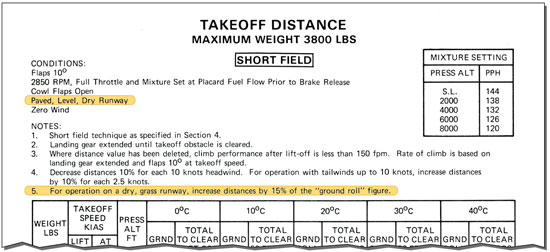 When computing the takeoff distance on a grassy runway with a 9-knot headwind, should I first do the calculations for the grassy runway (note no. 5) on my ground roll, then apply the wind corrections (note no. 4), or vice versa?
When computing the takeoff distance on a grassy runway with a 9-knot headwind, should I first do the calculations for the grassy runway (note no. 5) on my ground roll, then apply the wind corrections (note no. 4), or vice versa?
Can I have a solution from this example? Note: values are not based from the attached table
- Ground roll: 1000 feet
- Total distance to clear 50 feet: 1200 feet
- Wind: 9 knots Headwind
- Runway: Grassy
Thank you, Captains.
